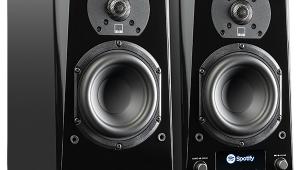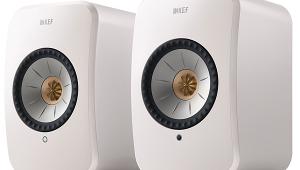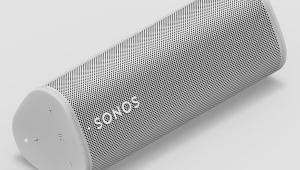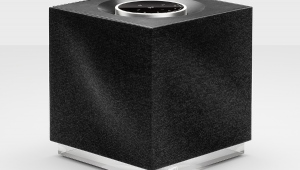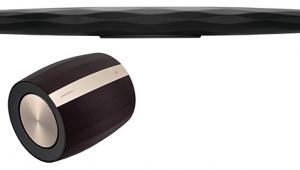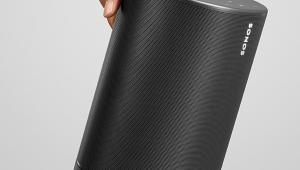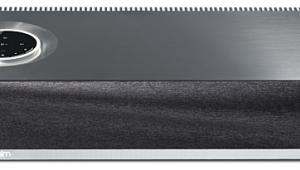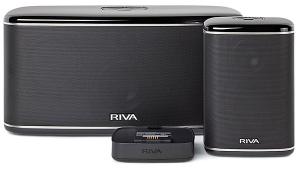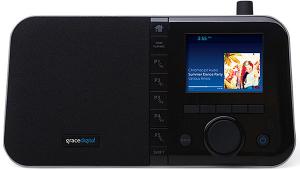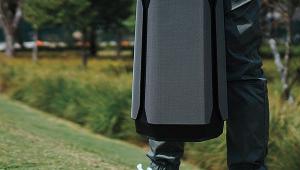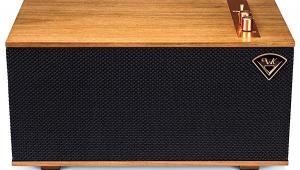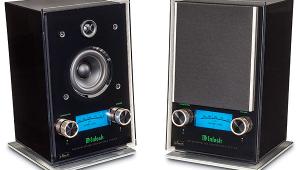Raumfeld Wireless Multiroom Audio System Review

AT A GLANCE
Plus
Intuitive, easy-to-use app
Classy, minimalist cosmetics
Supports up to 192-kHz/24-bit files
Minus
No Bluetooth or AirPlay
Only four currently
supported online music services
No subwoofer outputs
THE VERDICT
The Raumfeld system’s excellent-sounding active/passive speakers, ability to handle hi-res audio, and very intuitive app make it a top-notch competitor and a standout in a category that’s spawning a plethora of me-too Sonos imitators.
It’s mandatory at the beginning of any wireless streaming audio system review to mention Sonos. The company is a Goliath that launched the category more than a decade ago and now dominates it. The reason is simple: Sonos gear sounds good, is reliable, and is about as easy to use as it gets. That doesn’t mean, of course, that Sonos is perfection incarnate, nor is it totally without flaws. (There are chinks in every suit of armor.) But you do have to feel at least a modicum of pity for any manufacturer that decides to pick up a slingshot and take aim at the Sonos colossus.
The Road to Streaming Audio Hell
Some of those pitiable companies have names you probably know: Definitive Technology, Heos by Denon, Bose, Samsung, LG, and most recently (again, with a second incarnation) Yamaha. There’s also Bluesound, a sister company of NAD and PSB. But here’s a name I’m sure you don’t know: Raumfeld. The company was started in 2008 in Berlin (Germany, not Ohio…nor Wisconsin…nor…) by two audiophiles (Stephan Schulz and Michael Hirsch) who couldn’t stop thinking about making digital audio sound better. A scant—yes, a scant, I say—two years later, the Berlin Acoustics Group, the folks who make Teufel loudspeakers (you probably haven’t heard of them, either), acquired Raumfeld and began in-house development of a fledgling streaming audio system with a bit of advice from the Teufel speaker engineers.
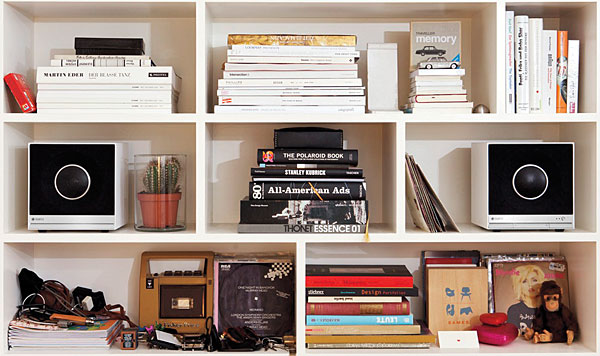
As they say, the road to multiroom wireless streaming audio hell is paved with good intentions—and access to an anechoic chamber. Actually, no one says that. The point is that it’s not easy designing a wireless multiroom system from scratch. I need to stress the multiroom aspect here, because everyone and their second cousin make a wireless speaker (or two or three). Most of them utilize Bluetooth (and many sound like crap). A few have AirPlay built in, a superior Wi-Fi-based protocol (and mostly sound pretty good, or at least, better). So the wireless-ness is relatively easy. The difficult part is streaming to multiple speakers, simultaneously or independently (AirPlay, for example, doesn’t do independent multiroom playback), and, most important, coming up with a way to operate the system that doesn’t require hours of waiting on the phone for someone in support to tell you to reboot the speaker.
Share and Share Alike
Thousands of years of recorded human history have shown that there are only two basic types of hardware that make up a wireless multiroom audio system: 1) speaker systems—nearly always the all-in-one kind—with the amplification and streaming circuitry built in, and 2) amps, preamps, or (more lately) AVRs with the streaming hardware on board. The Raumfeld folks haven’t reinvented the streaming wheel, but they have succeeded in putting their own spin on it. Their line will be coming to the U.S. in the near future, with a pre-sale said to be set for mid November on Raumfeld.com and full availability on Amazon by February 1. This initial Raumfeld U.S. offering includes the system we’ve gathered here: an all-in-one speaker system (One S, $249), two active speaker pairs (Stereo Cubes, $699/pair; and Stereo M, $1,399/pair), and a streaming preamp that can be used to turn an existing sound system into an additional listening zone (Connector, $299). There’s also the optional Raumfeld Expand ($49), which can be used as a dedicated wireless access point for the Raumfeld gear. Not reviewed here, but expected to be available are the One M all-in-one speaker, the Stereo L tower speakers, the One Soundbar and matching subwoofer, and the Sounddeck soundbase.
As with most streaming audio systems nowadays, there’s no required central hub or gateway, so you can start with a single component and add to the system over time. The Raumfeld system architecture is capable of distributing up to 10 independent audio streams simultaneously, assuming your Wi-Fi network has the capacity.

There are more similarities than differences among the various Raumfeld audio components. They all, for example, include the following: built-in 802.11b/g/n (WPA, WPA2 encryption); 10/100-megabit-per-second Ethernet connectivity; a USB 2.0 port; two insanely bright, white LED status lights on the front panel; an on/off switch (with auto on/off and manual settings); and a volume control. The One S and Stereo M speaker systems have four user-programmable preset buttons for immediate access to favorite playlists or streaming services. Unfortunately, you can’t dim the status LEDs on any of the components, which leaves you the choice of either turning off the lights completely or suffering an onslaught of retina-burning photon torpedoes any time you glance at the component. (Heos solved a similar problem by including dimming capability in a software update.) Other than during the initial configuration or bootup of a component, the status lights are pretty worthless, anyway. It would be helpful if one blinked to indicate when the device’s volume is muted, to distinguish from the status of simply not playing.
With the exception of the preamp-only Connector and the Expand access point, the Raumfeld products are all built like brick—well, you know. I may be exaggerating a bit because they’re not made of bricks, nor do they contain toilet facilities, but they certainly follow the stereotype of the German propensity for solid engineering. Every component—except, for some reason, the tabletop-style One S—includes a pair of RCA analog inputs for listening to and/or streaming a local source to other zones (including to the One S). These might include, for example, a disc player, cable box, or even a turntable (with an assist from a phono preamp). All support playback of MP3, WMA, WAV, AAC, FLAC, and Apple Lossless (ALAC) files stored on NAS drives, computers, and smartphones and tablets, and they can handle up to 192-kilohertz/24-bit sample rates, making them one of the only Hi-Res Audio-compatible wireless multiroom audio systems out there (another being Bluesound). Raumfeld also supports gapless playback. None of the models includes Bluetooth, AirPlay, or Play-Fi. In fact, Raumfeld takes pains to say that streaming audio in a lossless format (such as FLAC) over Wi-Fi offers better fidelity than AirPlay and—especially— Bluetooth.
At the moment, Raumfeld’s biggest weakness is the small number of supported online streaming audio services, which are currently limited in the U.S. to Spotify, Tidal, and TuneIn, with Rhapsody expected to be live by launch time. At latest count, Bluesound supports more than 10 services. Denon’s Heos offers at least nine. Then there’s the big daddy, Sonos, with support for a whopping 39 online audio services. Access to streaming services, however, is more of a legal issue than a technical one, and Raumfeld is likely to add more choices for the U.S. as time goes on. Then, there’s also the argument made by most of Sonos’ competitors: How many streaming services do you really need or use? If a handful of the most popular services are offered, the theory goes, most users will be satisfied. But even by that standard, with stalwarts like Pandora still missing, Raumfeld’s still got a way to go on this front.
At this point, you should be wondering what makes the components different? Good question. Let me tell you.
One S
Raumfeld’s One S is quite possibly the mightiest mini speaker you’ll ever come across. Somehow, the Raumfeld folks pack a forward-facing coaxial tweeter (1 inch)/woofer (3.9 inches) array, a pair of 3-inch side-firing passive radiators, 40 watts of Class D amplification, and both Wi-Fi and Ethernet connectivity, plus a top-hat-wearing, cane-tapping, singing and dancing frog, all together in a 7 x 5 x 4-inch box. (Just kidding about the frog, by the way, although that would be pretty damn cool.) A black fabric grille wraps the front and sides, while the top and back surfaces of the MDF cabinet are finished in a matte white. A thin rubber pad on the bottom keeps the One S from sliding around. The power button and those blinding status LEDs are set within an aluminum nameplate that runs across the bottom front of the One S.
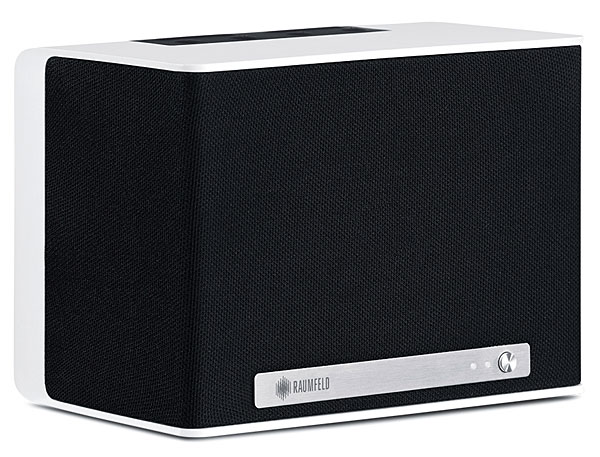
The volume +/– and four favorites buttons on the top of the One S are covered with a flexible membrane, and the speaker comes with a detachable rubber insert designed to cover the USB and Ethernet ports on the back. Both features help make the speaker moisture-resistant, so it can be used in a humid bathroom, for instance. The insert’s cut-out for the AC cord is a fraction of an inch too narrow, however, so you have to work to push the end of the cord through it. Or you can simply not use the insert.
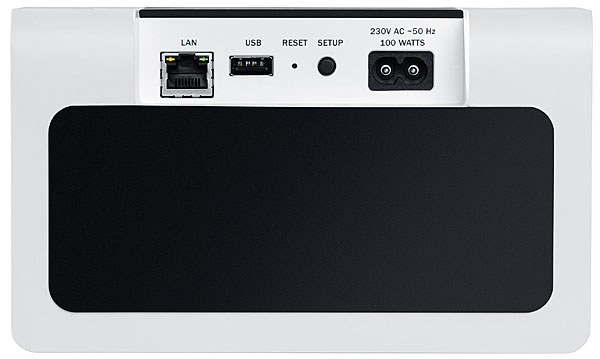
Used as a standalone speaker system, the One S sounds unbelievably bigger than it looks. Raumfeld specs it down to 60 hertz, and the One S certainly didn’t produce room-shaking bass. But the bass that did come from this clock-radio-sized speaker was absolutely amazing, especially on a bass-heavy track like Jennifer Warnes’ “Way Down Deep.” A lot of small all-in-one speakers tend to be harsh and brittle with high frequencies, but the One S is very smooth; you could almost call it “reserved” or, maybe, “deliberate” in its sonic character. Don’t look for stereo imaging, though, because a solo One S is strictly a mono speaker without any spatial processing to fool your ears into hearing a faux stereo image. You can, however, configure two One S speakers to work as a stereo pair.
Stereo Cubes
Sometimes—as a result of sheer genius, dogged hard work, or plain dumb luck—a company’s design and engineering teams come up with a finished product in which the cosmetics, components, features, and form factor all fit together so well, it’s impossible not to fall in love with it. In my opinion, one of those rare products is the Raumfeld Stereo Cubes. The system consists of two 8 x 8 x 8-inch (approximately) matte-white cubes with black grilles covering most of the front of the cabinets. There’s an indentation in the grille that circles around a 3-inch hole, through which the domed grille of the 1.1-inch tweeter emerges. A 5.1-inch midbass driver is mounted coaxially behind the tweeter, and there are two forward-firing ports. The speakers are biamped, with each driver having its own 40-watt Class D amp.
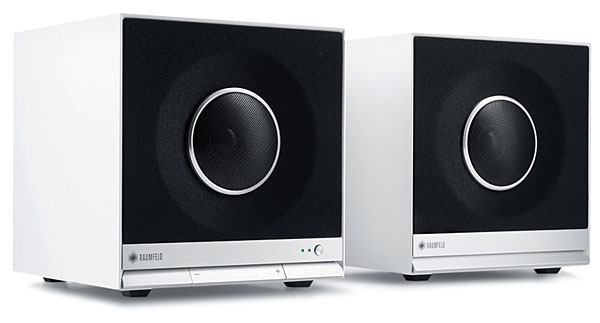
The electronics—including the amps for both speakers—are inside the “active” or “master” speaker, and each cube has a 6.3mm jack for connecting the two speakers using the supplied 3.3-foot white cord with phone plugs on the ends, the same you’d expect to find on a headphone cable. On the front of the master speaker are those torturous LED status lights (have I mentioned how bright these are?), an on/off button, and a rocker bar for adjusting the volume. Two small things keep me from embarrassingly falling 110percent head-over-heels in love with the Stereo Cubes: 1) no preset favorites buttons, and 2) the lack of a subwoofer output. (The LEDs go without saying.)

